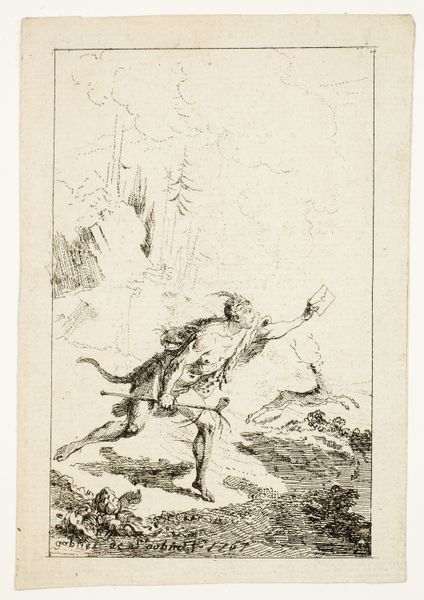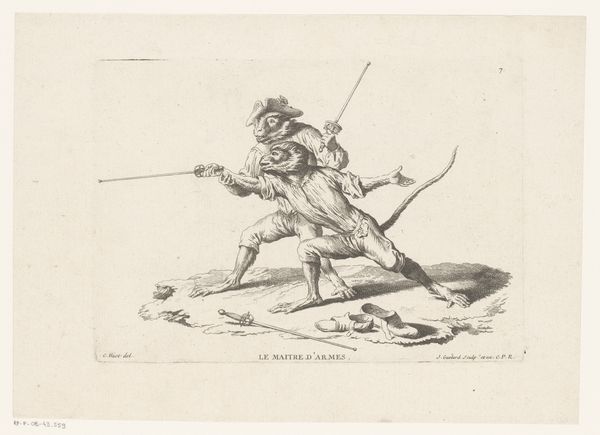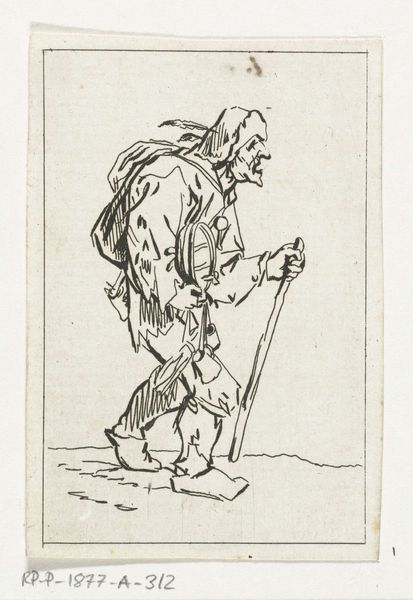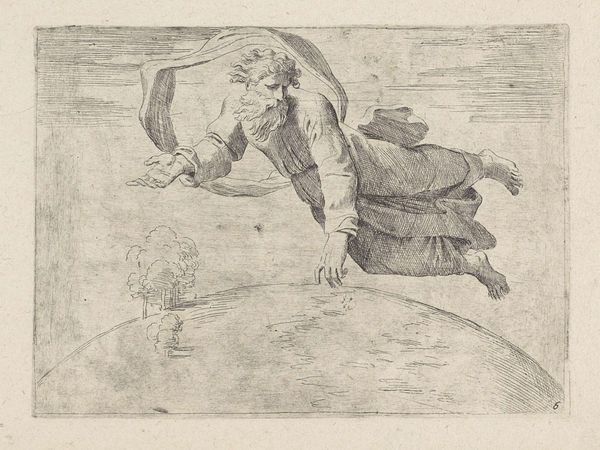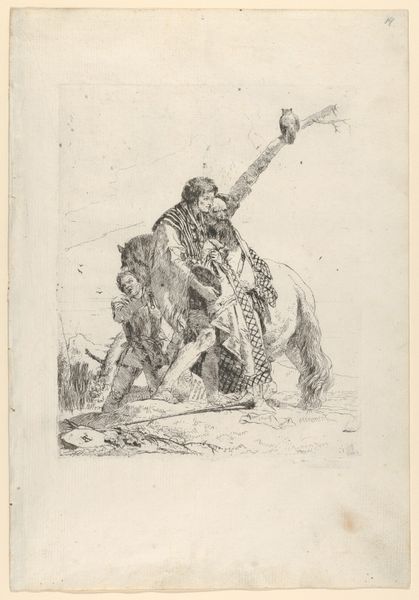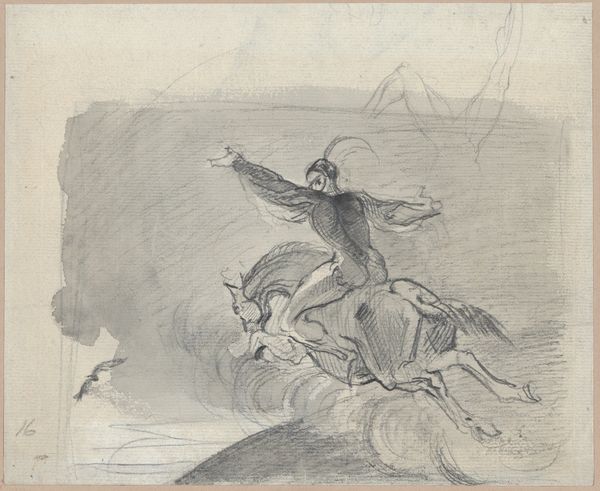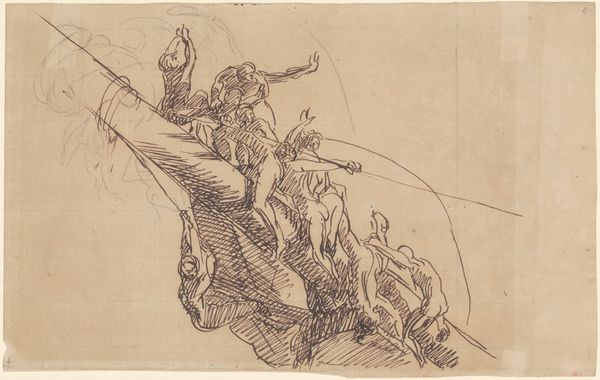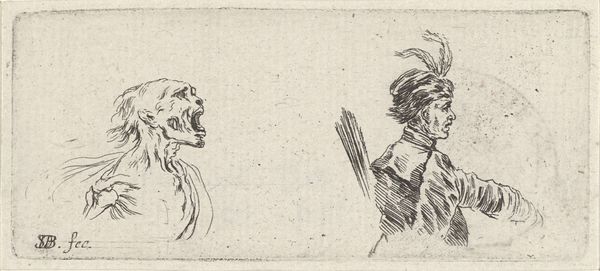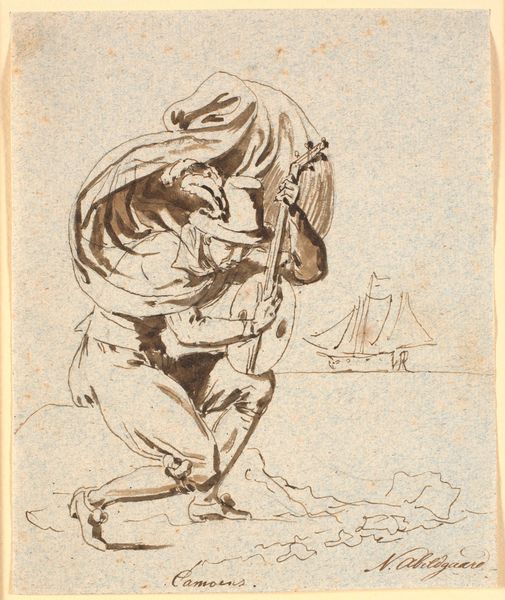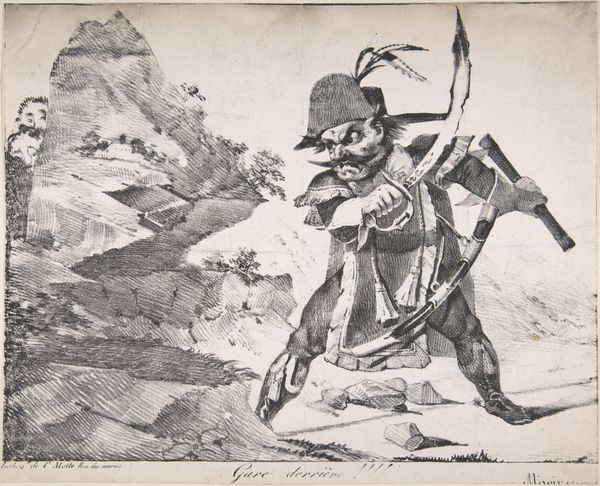
Niels Klim dukker atter frem på de norske klipper 1786 - 1789
0:00
0:00
Dimensions: 174 mm (height) x 186 mm (width) (bladmaal)
Editor: This is "Niels Klim dukker atter frem på de norske klipper," a drawing made between 1786 and 1789 by Nicolai Abildgaard. It feels dramatic, almost theatrical, with that figure emerging on the rocks. What's your take? Curator: It strikes me as a powerful statement on identity and national awakening. The figure, clearly struggling yet triumphant, embodies a nation's yearning for self-determination in the face of external pressures. Consider the context: late 18th century, a period of profound social and political upheaval across Europe. How might this image speak to those struggles? Editor: I see the drama, the individual against a wild landscape... but how does that tie into social change? Curator: Look at the landscape itself. Is it merely a backdrop, or does it actively participate in the narrative? The craggy rocks, the implied vastness – don't they echo the obstacles facing a nation forging its own identity? Think about how romanticism often intertwined personal experience with larger socio-political anxieties. How could we read this in relation to queer ecology, for instance, with the very notion of “nature” here presented as something chaotic? Editor: That’s interesting… It never occurred to me that landscape could be more than scenery. Curator: The beauty of art lies in its potential to challenge our preconceptions. Editor: This makes me consider the power of art in communicating national aspirations during that time. I will remember that in our final draft! Curator: Indeed, understanding art through a contextual lens allows us to recognize it not only for its aesthetic value but as a significant document of cultural identity and societal struggle.
Comments
No comments
Be the first to comment and join the conversation on the ultimate creative platform.
